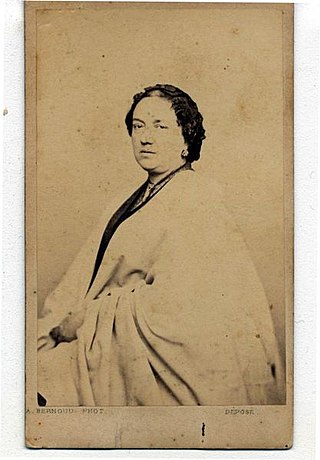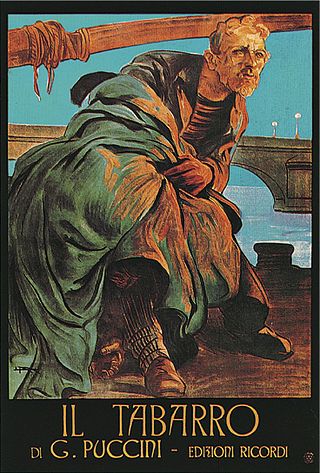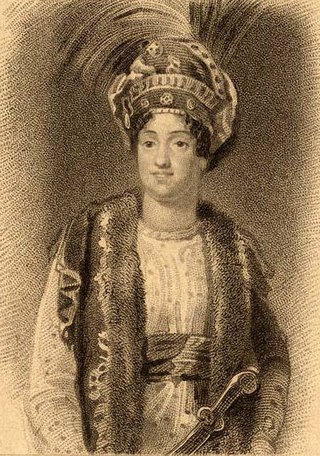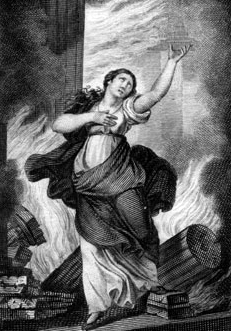Related Research Articles

Balbina Steffenone was a 19th-century soprano.

Idomeneo, re di Creta ossia Ilia e Idamante is an Italian-language opera seria by Wolfgang Amadeus Mozart. The libretto was adapted by Giambattista Varesco from a French text by Antoine Danchet, based on a 1705 play by Crébillion père, which had been set to music by André Campra as Idoménée in 1712. Mozart and Varesco were commissioned in 1780 by Karl Theodor, Elector of Bavaria for a court carnival. He probably chose the subject, though it may have been Mozart. The work premiered on 29 January 1781 at the Cuvilliés Theatre in Munich, Germany.

La clemenza di Tito, K. 621, is an opera seria in two acts composed by Wolfgang Amadeus Mozart to an Italian libretto by Caterino Mazzolà, after Pietro Metastasio. Mozart began the work while he was finishing Die Zauberflöte, the last of his principal operas. La clemenza di Tito premiered on 6 September 1791 at the Estates Theatre in Prague.

Adriana Lecouvreur is an opera in four acts by Francesco Cilea to an Italian libretto by Arturo Colautti, based on the 1849 play Adrienne Lecouvreur by Eugène Scribe and Ernest Legouvé. It was first performed on 6 November 1902 at the Teatro Lirico in Milan.

The Last Days of Pompeii is a novel written by Edward Bulwer-Lytton in 1834. The novel was inspired by the painting The Last Day of Pompeii by the Russian painter Karl Briullov, which Bulwer-Lytton had seen in Milan. It culminates in the cataclysmic destruction of the city of Pompeii by the eruption of Mount Vesuvius in AD 79.

Il tabarro is an opera in one act by Giacomo Puccini to an Italian libretto by Giuseppe Adami, based on Didier Gold's play La houppelande. It is the first of the trio of operas known as Il trittico. The first performance was given on December 14, 1918, at the Metropolitan Opera in New York City.
Errico Petrella was an Italian opera composer.

Gli ultimi giorni di Pompei is a 1913 Italian black and white silent film directed by Eleuterio Rodolfi.

Olimpie is an opera in three acts by Gaspare Spontini. The French libretto, by Armand-Michel Dieulafoy and Charles Brifaut, is based on the play of the same name by Voltaire (1761). Olimpie was first performed on 22 December 1819 by the Paris Opéra at the Salle Montansier. When sung in Italian or German, it is usually given the title Olimpia.

Artaxerxes is an opera in three acts composed by Thomas Arne set to an English adaptation of Metastasio's 1729 libretto Artaserse. The first English opera seria, Artaxerxes premiered on 2 February 1762 at the Theatre Royal, Covent Garden, and continued to be regularly performed until the late 1830s. Its plot is loosely based on the historical figure, Artaxerxes I who succeeded his father Xerxes I after his assassination by Artabanus.

Didone abbandonata was an opera in three acts composed by Tomaso Albinoni. Albinoni's music was set to Pietro Metastasio's libretto, Didone abbandonata, which was in turn based on the story of Dido and Aeneas from the fourth book of Virgil's Aeneid. The opera premiered on 26 December 1724 at the Teatro San Cassiano in Venice and was the first time that an opera based on a Metastasio libretto was performed in Venice.

Didone abbandonata is an opera in three acts composed by Domenico Sarro to a libretto by Pietro Metastasio of the same name which was based on the story of Dido and Aeneas from the fourth book of Virgil's Aeneid. The opera premiered on 1 February 1724 at the Teatro San Bartolomeo in Naples.

Fosca is an opera seria in four acts by Brazilian composer Antônio Carlos Gomes to an Italian-language libretto by Antonio Ghislanzoni based on Luigi Capranica's 1869 novel La festa delle Marie.

Arbace is an opera seria in three acts by Francesco Bianchi. The libretto was by Gaetano Sertor.

Gloria is a tragic opera in three acts by Francesco Cilea with an Italian libretto by Arturo Colautti. A variation on the Romeo and Juliet story and set in 14th century Siena, the libretto is based on Victorien Sardou's 1874 play La Haine (Hatred). The opera premiered on 15 April 1907 at La Scala conducted by Arturo Toscanini with Solomiya Krushelnytska in the title role. Gloria was a failure at its premiere when it was withdrawn after two performances and fared little better in the 1932 revised version, although there have been two late 20th century revivals. It proved to be Cilea's last staged opera. In the 43 years following the premiere of Gloria he worked on two or three further operas which were never performed and continued to compose chamber and orchestral music.
Artaserse is an opera in three acts composed by Leonardo Vinci to an Italian libretto by Pietro Metastasio. This was the first of many musical settings of Metastasio's libretto Artaserse. Vinci and Metastasio were known to have collaborated closely for the world premiere of the opera in Rome. This was the last opera Vinci composed before his death, and also considered to be his masterpiece. It is known among Baroque opera enthusiasts for its florid vocal lines and taxing tessituras. It premiered during the carnival season on 4 February 1730 at the Teatro delle Dame in Rome. As women were banned from the opera stage in Rome in the 18th century, all the female roles in the original production were taken up by castrati. However, subsequent 18th-century productions outside Rome included women in the cast.

Giovanni Guicciardi was an Italian opera singer who sang leading baritone roles in the opera houses of Italy and Portugal. He is most remembered today for having created the role of Count di Luna in Verdi's Il trovatore. He created also several other leading roles in operas by lesser known Italian composers. Guicciardi accumulated a considerable fortune during the course of his career. After his retirement from the stage, he taught without payment in music schools in his native city, Reggio Emilia, and presided over a charity for orphaned musicians. He died in San Polo d'Enza at the age of 64.

L'ultimo giorno di Pompei is an opera in two acts composed by Giovanni Pacini to an Italian libretto by Andrea Leone Tottola. It premiered to great success at the Teatro San Carlo in Naples on 19 November 1825 followed by productions in the major opera houses of Italy, Austria, France, and Portugal. When Pacini's popularity declined in the mid-19th century, the opera was all but forgotten until 1996 when it received its first performance in modern times at the Festival della Valle d'Itria in Martina Franca. L'ultimo giorno di Pompei influenced either directly or indirectly several other 19th-century works, most notably Karl Bryullov's 1833 painting, The Last Day of Pompeii.

The Last Days of Pompeii is a 1908 Italian silent historical film directed by Arturo Ambrosio and Luigi Maggi and starring Lydia De Roberti and Umberto Mozzato. It was loosely based on the novel of the same title by Edward Bulwer-Lytton. The film was a success on its release, and its popularity is credited with starting a fashion for epic historical films.
Fra Gherardo is an opera in three acts composed by Ildebrando Pizzetti who also wrote the libretto. Set in Parma at the end of the 13th century, the opera's story is based on the life and death of Gherardino Segalello as chronicled by Salimbene of Parma. Pizzetti composed the work, his fifth opera, between 1925 and 1927. The world premiere took place at La Scala, Milan on 16 May 1928 in a performance conducted by Arturo Toscanini with Antonin Trantoul and Florica Cristoforeanu in the leading roles of Fra Gherardo and Mariola.
References
- 1 2 3 4 Casaglia, Gherardo (2005). "Jone, 26 January 1858" . L'Almanacco di Gherardo Casaglia (in Italian).